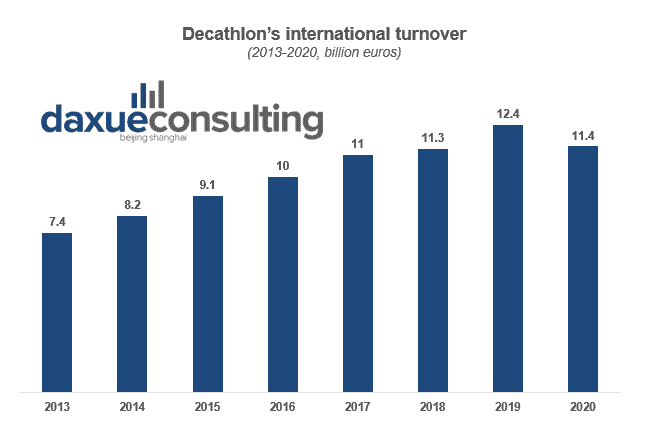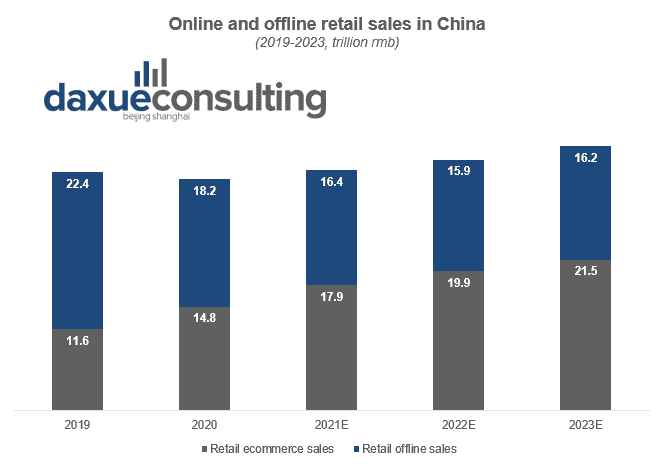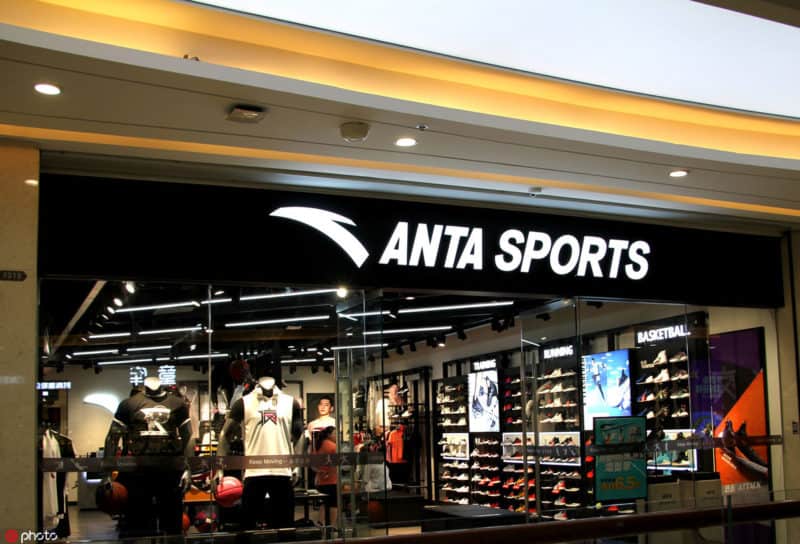Decathlon is both a manufacturer and retailer of sportswear and sports equipment based in France. Shipping worldwide, it is the largest sporting goods retailer in the world with 1,696 stores in 59 countries as of December 2020. Among them, China represents a massive market for the company. Present in China since 2003, Decathlon had 313 stores in the Middle Kingdom in 2020, second to only France in store counts by just 15 stores. In 2017, the company announced that it made over 10 billion RMB in sales revenue in China, with the highest store count growth ratio among any other country.
But what really makes the success of Decathlon in China? In this article, we will explore the different contributing factors to the success of the rapid Chinese expansion of the company. From their wide products range to their advertising and distribution strategy, Decathlon is the prime example of a right China market entry strategy.

Source: Decathlon. Decathlon has seen a slump in sales in 2020 due to worldwide covid restrictions
How decathlon sells a wide variety of cheap but quality products
Decathlon releases more than 3,000 products in China every year covering over 80 sports. The company is able to do so by owning a large number of sportswear and accessories brands routinely releasing new products. Thanks to brands like Quechua, Domyos and Kalenji, Decathlon is able to offer a large portfolio of sportswear products in China. By reducing the share of third-party brands it sells in stores, Decathlon is able to maximize profits but more importantly to reduce its asking prices. The company’s stated identity is indeed to provide “the best products to anyone”. This influences their pricing strategy, which translates to most Decathlon products being on average 20€ cheaper than the competition. Better-yet, the cheaper price tag asked by the retailer does not come with an expected drop in quality, which is a crucial detail for the Chinese market.
Chinese consumers have indeed high-quality expectations when it comes to European brands, which are also commonly associated with higher prices. One strength of Decathlon in China is thus to offer a wide range of decent quality products for a cheaper price than other western mainstay brands like Nike or Adidas.
Online channels at the core of Decathlon’s distribution strategy
In 2010, 7 years after making its entry on the Chinese market, Decathlon was boasting an impressive 136% year-on-year sales growth on Tmall, one of China’s largest online retail platforms. By 2015, only stores had spread to 370 Chinese cities and counting. Combined with an aggressive expansion strategy for both brick and mortar and online stores, Decathlon aims for multiplying distribution channels to Chinese consumers. Recently, the brand has opened a new flagship store on JD.com, another large Chinese e-commerce platform. Online retail is particularly important for the strategy of Decathlon in China as Chinese consumers are particularly internet savy and shop online more than in any other country. According to eMarketer, online retail sales will account for 52.1% of total retail sales in China, a World first far ahead of the second country with the largest share of online sales, South Korea, at 28.9%.

A minimalist advertisement strategy based on word-of-mouth marketing
One common and effective way to enter the Chinese market is to spend resources on influencer -also called KOL- marketing. However, Decathlon has adopted another more unconventional yet as effective marketing strategy by betting on a consumer-centric approach. By reportedly only spending 1% of their turnover on advertising, Decathlon has in China privileged a strategy based on word-of-mouth. To encourage this, the company has invested on firsthand brand awareness for consumer by opening a large number of online and offline stores in China while banking on customer satisfaction. This is due to good quality products and cheaper prices, but also other customer incentives.
Notably, Decathlon offers free trials for their products in on-site trial areas for customers to try on products before they buy them. The company has also recently re-centered their strategy on families, sports enthusiasts and women, which are the groups with the most growth potential in sportswear in China.
The sportswear market in China is seeing rising competition
In recent years, the Chinese government’s dual circulation strategy and the Chinese consumers’ newfound cultural confidence has allowed domestic companies to develop in China. The sporting goods industry is not an exception with domestic brands Anta and Li-Ning gaining serious grounds in the ever-growing market of sportswear in China. Anta in particular has positioned itself as a fierce competitor, leading the sporting goods Chinese market in value and forcing Decathlon to reconsider its’ expansion plan in China. Despite the rising tide of domestic competition, Decathlon still has a notable competitive advantage in the sheer number of sports the retailer covers with its’ wide range of products. Nonetheless, Decathlon’s efforts to have a larger presence on Chinese online retailers’ websites can also be seen as a way to answer the rising popularity of domestic brands on these platforms.

Key elements of the marketing strategy of Decathlon in China
- Decathlon offers a wide range of products of good quality and for a relatively cheap price compared to other western sportswear brands. This is made possible by the company’s numerous product brands, allowing Decathlon a better control over their supply chain and to cut on prices.
- Decathlon has invested in a vast network of offline and online stores in China to maximize their potential reach. Ecommerce outlets are particularly important as China’s economy goes more and more towards digital retail.
- A customer-centric strategy in sales allows the company to cut advertising costs and rely on word-of-mouth marketing.
- Although Decathlon has been successful in China so far, domestic competitors like Anta and Li-Ning are on the rise. The company might have to adjust its strategy in the future to navigate an increasingly competitive market. Already it has started to shift focus towards families and sports enthusiasts, the fastest growing customer groups in the Chinese sportswear industry.
Author: Camille Gaujacq





